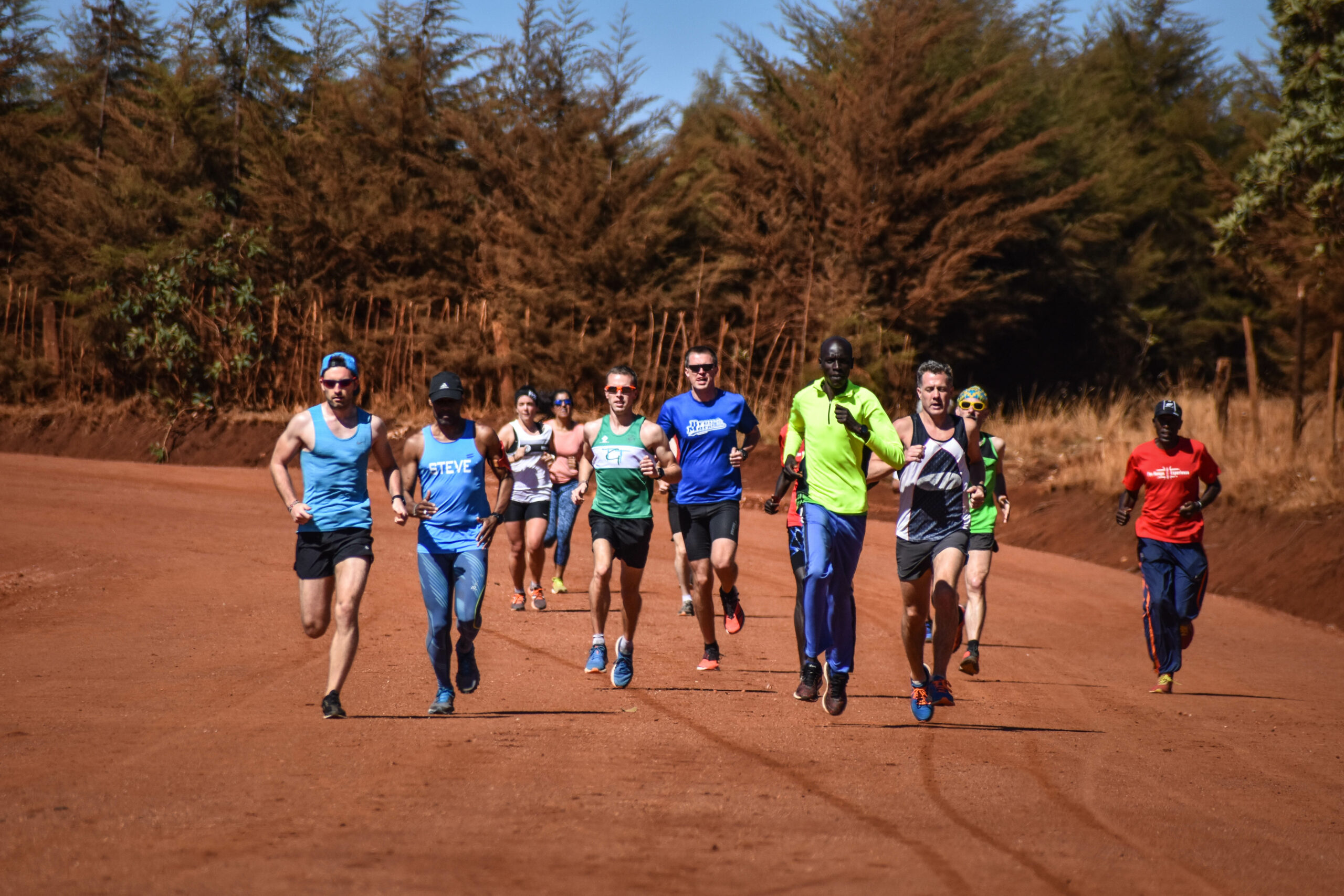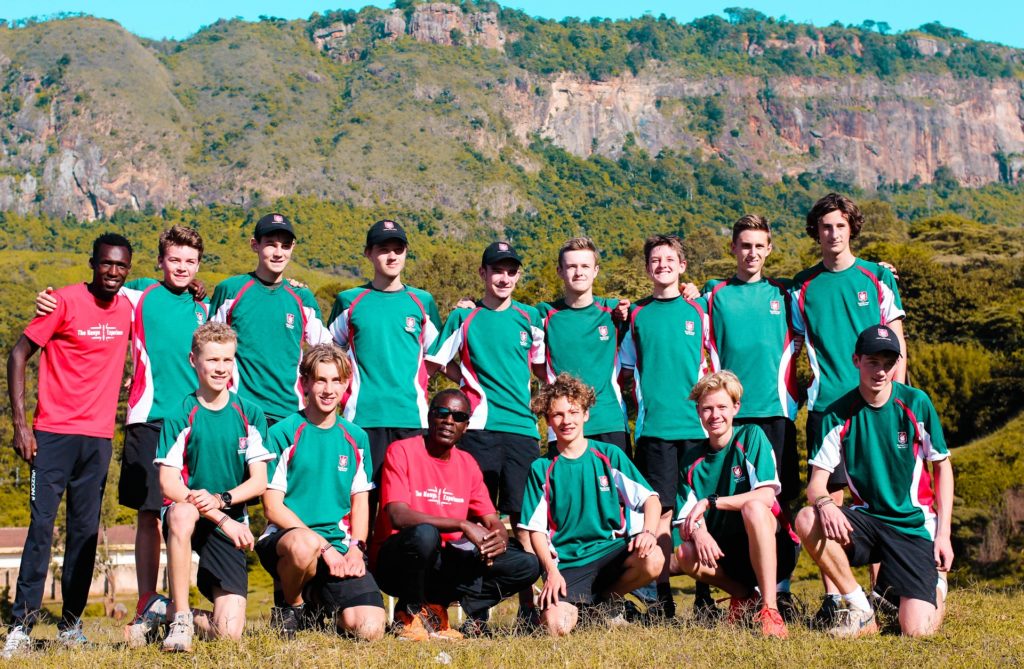Fartlek for Distance Runners
The 4th in our Lessons from Kenya series sees us delve into the world of Fartlek.
Most readers of this blog will be well versed in the basic concept of Fartlek, the original term meaning ‘sped play’ in Swedish, so we won’t spend too long defining our terms or explaining what fartlek actually is.
We’ve written about Fartlek in detail before and you can find that article here www.traininkenya.com/2018/06/18/run-the-kenyan-way-fartlek/
And our second article with example workouts here www.traininkenya.com/2018/06/30/run-the-kenyan-way-fartlek-part-2-example-sessions/
This series of blogs is about what we, as everyday runners of varying levels, can learn from Kenya and the elite Kenyan runners in Iten. This blog will highlight why fartlek plays such an important role in the training of Kenyan runners, including being a weekly inclusion in Eliud Kipchoge’s training. And how it can help you become a better runner.
[Group training during a Kenya Experience Camp]
Fartlek is nothing new to most serious or long term runners, but in my experience, it is usually viewed as a secondary or less important type of training than intervals or tempo runs. Fartlek’s are more commonly used when an athlete is returning to training after injury and is deemed not ready for full training, or as an occasional down week activity.
In Kenya, fartlek is held in much higher esteem and is a key ingredient in almost every training program.
So what are the benefits of fartlek that Kenyan’s see but are not widely accepted by other runners?
Fartlek is a great physical training tool. You can build endurance, speed, speed endurance, strength, aerobic capacity – you name a physical parameter useful for runners and you can probably develop it through a fartlek run. So why is it that fartleks are seen as the poorer cousin to intervals which are seen very much as the gold standard in the western world?
It’s more of a psychological issue than a physical one. Fartleks are so underrated outside of Kenya because they don’t fit with the prevailing approach of detailed analysis and measuring every last aspect of your run.
Or rather, they could do, but they don’t look as impressive!
Fartlek’s by their very nature are slower than interval sessions and usually slower than a tempo run of the same total distance given the up and down nature of the pace. So, they appear less impressive or less ‘valuable’ in a world that favours stats and appearances. For runners who want their training stats to look impressive, fartlek’s just don’t cut the mustard.
But that is to ignore the huge upside just because your overall pace or other Garmin stats won’t look as good; A huge error of judgement for any serious athlete.
The unrestricted nature of a fartlek is its biggest strength. With a fartlek, you’ve already accepted that the pace and the stats are not so important before you even get started. So now you have the opportunity to play around with things such as including hills within the workout (as would be the case in Kenya).
Fartlek also forces you to quickly develop essential race skills such as appropriately judging your effort where constantly updated split times are not available to help you out (IE any race not on the track). This is a highly valuable skill that is often overlooked and underdeveloped in athletes who focus solely on interval training.
In Kenya, fartlek makes up approximately 50% of all hard workouts. IE one out of every two hard workouts is a fartlek. For most runners, this means a track session on a Tuesday and a fartlek on a Thursday, before a weekend-long run (which is also considered a hard day for some).
This means that Kenyans are practicing these race skills and learning to judge their effort without needing a GPS watch on a weekly basis.
It also removes, at least once a week, the pressure and mental strain which can come from trying to hit certain splits in training.
Kenyan’s train hard during fartlek runs for sure, but it is entirely effort based, and as a result, there is a reduced tendency to beat yourself up if it doesn’t go quite as planned.
This isn’t a point which should be taken lightly, how many times have you, or a runner you know walked away from the track disappointed, angry, annoyed etc because despite all their efforts they have missed the splits they aimed for during a workout.
More often than not, in a track workout (or tempo run) instead of backing off slightly and running at the correct effort (and thus still attaining the benefits of the workout), the runner will instead push harder and chase the pre-planned times. 9 times out of 10 this is a bad idea with negative consequences physically and mentally.
In Kenya, you have the double positive of the benefits of fartlek runs (as described above) and a 50% reduction in the possibility of these negatives occurring.
Of course, if you are the rare runner who can simply say ‘OK, no problem I’m not hitting my splits tonight – let me back off and run these 400s in 75 instead of 72’ then all good and the above point is moot for you. But we all know that most of us are not like that at all. And including more workouts that remove the pressure and allow us to run to feel would be a very good idea.
And let’s not forget that fartlek is fun!
Whilst the original use of fartlek in the strict sense of ‘speed play’ was for unstructured fluctuations in speed, the more common method these days is something planned in advance. But a typical session of 1minute fast, 1minute easy repeated x15 for example, is still a more spontaneous form of running than having everything prescribed to the second as many track workouts are.
So, relax, take a leaf out of Eliud Kipchoge’s training diary, and head out to an undulating course in a natural environment and enjoy a fartlek!
Check out my previous blog on fartlek here where I delve into the specifics of why fartlek is such a good training tool and give some examples of my favourite sessions.
Thanks for reading and more to come next time in our Lessons from Kenya Series.
About the Author:
Gavin Smith
Gavin Smith is the Co-Founder of Kenya Experience and Running Trips. He is a distance runner and formerly a coach to some of Kenya’s most decorated athletes. He graduated from Loughborough University in 2007 and lived in Iten Kenya from 2010 – 2014 where he was Assistant Coach to Renato Canova one of the worlds most celebrated distance running coaches. He now lives in Loughborough with his wife Lauren, Son Jacob and Whippet Yego.
Kenya Experience – Running Camps in Iten Kenya for Runners of all levels
Kenya Experience
Combine a serious training camp with a cultural immersion into the world of Kenyan Running.
Enjoy the ultimate running holiday with Kenya Experience.
Learn from world-class coaches and enjoy the running holiday of a lifetime.
Training Focus Camps
See our new UK based weekend Training Camps.
World-Class Experts, Small Groups, High-Performance Venues.
Improve your running with Training Focus Camps.






Recent Comments